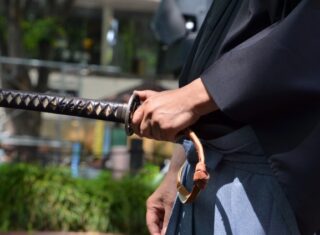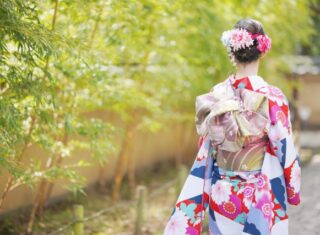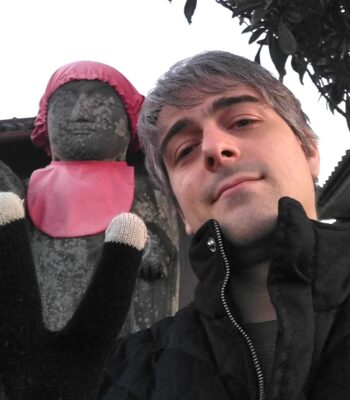- Learning Japanese
- Japanese Culture
The History and Fundamentals of Japanese Grammar
2025.06.03

Why Studying Japanese Grammar Is Essential
Many learners think they can "pick up Japanese naturally" without studying grammar.
However, Japanese grammar is fundamentally different from English, and without understanding it, learners struggle to form even basic sentences.
Without grammar, you're stuck translating word-by-word, leading to unnatural sentences.
I still remember back when I was tutoring Japanese in college. Part of my job was helping students with their written assignments. An unexpectedly large proportion of the essays I read—even from intermediate-level students—were almost impossible to understand. Not because they weren’t trying, but because the grammar was missing or completely misused. I remember thinking, “Wow… I literally can’t understand what they’re trying to say.”
That moment stuck with me: without grammar, language breaks down. You can’t understand others, and they can’t understand you—whether you're speaking or writing. And since language is ultimately about understanding each other, grammar isn’t just important—it’s absolutely essential.
Understanding Japanese grammar means developing the ability to think in Japanese.
Grammar is not just rules—it’s the framework that makes communication meaningful.
Grammar is shaped by culture:
- Japanese politeness culture → Birth of Keigo (honorific speech).
- Emphasis on indirectness → More intransitive verbs, omission of subjects, vague expressions.
- High-context communication → Less need for explicit subjects or pronouns.
Key message:
Grammar isn't just a set of rules—it reflects the culture, thought patterns, and communication style of the Japanese language.
How & Why Japanese Grammar Developed Differently from Other Languages
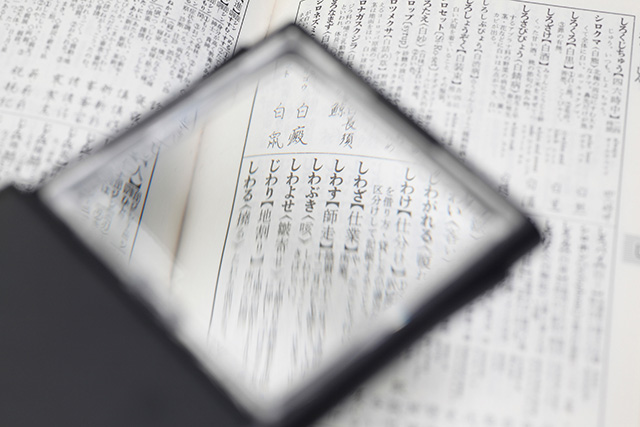
When and where did early Japanese and Korean emerge?
Early forms of Japanese and Korean began developing in Northeast Asia, with early Japanese forming in the Japanese archipelago and early Korean in the Korean Peninsula.
Linguistic records suggest that by the Yayoi period (300 BCE – 300 CE), Japanese had already diverged from mainland languages and was developing a distinct agglutinative grammar system (where verbs conjugate with suffixes).
The Korean language, similarly, had developed agglutinative grammar by the time of the Three Kingdoms period (57 BCE – 668 CE), sharing many features with early Japanese.
Why are Japanese and Korean grammar similar?
Possible Shared Altaic Language Roots
One theory suggests that Japanese and Korean originated from the same proto-Altaic language family (which also includes Mongolic and Tungusic languages).
While this theory is debated, it would explain why their sentence structures, verb conjugations, and honorifics are so similar.
Ancient Migration & Cultural Exchange
Early Japanese civilization was heavily influenced by migrants from the Korean peninsula during the Yayoi period (300 BCE – 300 CE).
These migrants brought farming, metalworking, and possibly linguistic structures that shaped early Japanese.
The Korean kingdom of Baekje had strong ties with early Japan, sharing aspects of culture, language, and even government structure.
Both Developed in Isolation from Chinese Grammar
Unlike Vietnamese, which adopted both Chinese characters and Chinese grammar, Korean and Japanese retained their native grammar while only borrowing Chinese vocabulary and writing systems.
This allowed both languages to preserve their distinct grammatical structures while integrating Chinese kanji/hanja words.
Why did Japanese and Korean grammar develop differently?
Geographic Separation:
- Korea had direct interaction with China for centuries, adopting more of its writing system, philosophical ideas, and academic traditions.
- Japan, an island nation, had more cultural independence, allowing it to modify borrowed Chinese elements in its own way (e.g., keeping kanji but developing native hiragana/katakana).
Cultural Structure:
- Both Japan and Korea had strict social hierarchies, but Japan refined its honorific system (keigo) even further due to samurai culture and rigid class structures during the Edo period.
- Korea, having more direct Chinese influence, maintained a stronger linguistic connection to Chinese, especially in formal and scholarly writing.
Key Message:
- Japanese and Korean share deep structural similarities due to their possible common roots and early migration exchanges.
- However, due to geographic and historical separation, they evolved unique linguistic features while maintaining the core similarities that make them grammatically alike today.
The Fundamental Ways That Japanese Grammar Differs from English Grammar

A) Sentence Structure: SOV vs. SVO
- English → Subject-Verb-Object (SVO) → "I eat sushi."
- Japanese → Subject-Object-Verb (SOV) → "I sushi eat." (私は寿司を食べる。)
- Cultural connection:
- In English, who does what is the focus (individual agency).
- In Japanese, the action itself or result is the focus, making SOV more natural.
B) The Role of Particles Instead of Word Order
- English relies on strict word order → "The dog chased the cat" vs. "The cat chased the dog" = Completely different meanings.
- Japanese relies on particles → 犬が猫を追いかけた 猫が犬を追いかけた (Particles define roles, not order).
- Cultural connection:
- Japanese places more importance on context rather than stating things directly.
C) No Plural Forms & No Articles (A/The)
- English has singular & plural distinctions → "one cat" vs. "two cats."
Japanese often omits this → 猫がいる (There is a cat / there are cats.)
- English has articles ("a" and "the"), while Japanese relies on context.
- 本を買った。 → (I bought a book OR the book, depending on context.)
Cultural connection:
- Japanese focuses on the whole and society, whereas Western languages focus more on the individual.
- This leads Western languages to emphasize how unique a noun is, whereas in Japanese, this is not regarded as an important function.
- This is also why in Japan, people call each other by family names, not individual names.
D) The Use of Politeness Levels in Grammar
- Casual: 行く (iku) → Polite: 行きます (ikimasu) → Honorific: いらっしゃいます (irasshaimasu).
- Japanese society emphasizes respect and social hierarchy, so grammar must change based on the listener.
Cultural connection:
- Keigo exists because of Japan’s hierarchical culture (elders, senpai-kouhai, business culture).
- Using the wrong form can sound rude or overly distant depending on the relationship.
E) Omission of Subjects & Nouns in Japanese
- English requires explicit subjects → "I am going to the store."
- Japanese omits the subject if obvious from context → "店に行く。" (Going to the store.)
Cultural connection:
- Japanese is a high-context language, meaning speakers assume shared understanding.
- By omitting the subject, the speaker puts more focus on the context (what, why, how, environment) and the content of the conversation instead of the who.
F) Intransitive-Heavy Japanese vs. Transitive-Heavy English
- English prefers transitive verbs → "I dropped the pen." (I am doing the action.)
- Japanese prefers intransitive verbs → ペンが落ちた。 ("The pen fell.")
Cultural connection:
- In English, who does what is important (Western individualism).
- In Japanese, the event itself or surrounding conditions are more important (group-oriented thinking).
- This is why Japanese uses more passive and indirect expressions!
Key message:
Japanese grammar reflects indirectness, shared context, and hierarchy.
The Best Strategies for Mastering Japanese Grammar Efficiently
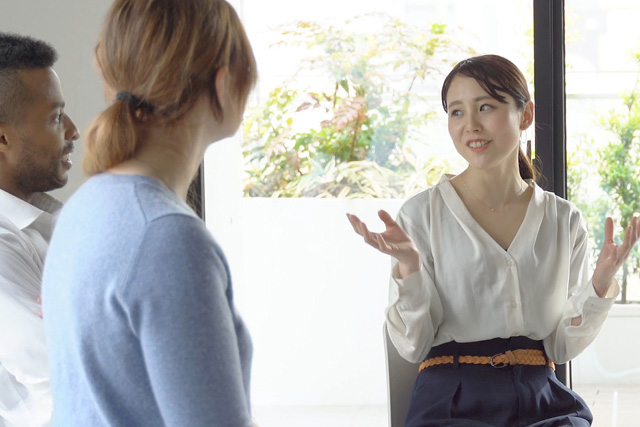
Follow a Structured Study Path (Learn in Layers)
Start with mastering basic sentence patterns, then build up to particles, and then verb conjugations.
Don’t rush into keigo or complex grammar before solidifying the fundamentals. I can't tell you how many times we've gotten consultation requests from people taking online private lessons who say they “feel like they’ve stopped making any progress.”
And it makes sense—before finding OSJ, their options were usually gimmicky YouTube videos about hiragana, katakana, and a handful of basic kanji, or else vast seas of websites offering random tutoring sessions where you just chat in broken Japanese without ever learning the structure of the language.
Especially with Japanese, if you don’t learn in a structured way, you’ll eventually hit a wall at the beginner–intermediate stage.
You’ll have only learned a fragmented, “gaijin” version of Japanese, without actually understanding the mechanics of the language.
Have you ever been to a Chinese restaurant where the staff can only string together a few basic English phrases they picked up talking to customers? That’s exactly what your Japanese ends up sounding like without real structure.
Learn Grammar in Context, Not as Isolated Rules
Single sentence context is better than flashcards, and short stories or dialogues are better than single sentences.
The more real-life context and emotional connection, the better. Even if the sentences are simple, context improves understanding exponentially. Instead of memorizing that "たい" means "want to," it’s far better to remember it through a sentence like 「寿司を食べたい!」(I want to eat sushi!).
Maybe you’ve been building an impressive flashcard deck—over 1,000 phrases, even. That’s great as a supplement!
But it’s important to know that flashcards alone won’t get you to fluency. Reading 「want to = たい」 over and over again on a flash card isn’t going to help you actually use the ~たい form naturally—or with flexibility.
To really master a grammar pattern, you need to see and use it in a wide variety of contexts, so you can apply it with different verbs, situations, and nuances. Without that exposure, your understanding remains rigid, and your speech becomes limited.
Be Creative and Actively Use Grammar in Your Own Sentences
Thinking of your own examples is far more effective than passively completing repetitive workbook exercises.
Try forming sentences based on your actual life, your interests, or things you’re curious about. This process not only forces you to internalize the grammar but also helps build fluency through personalization.
At OSJ, we train students to do this consistently—and it’s one of the top reasons our learners pick up grammar faster and retain it better than through traditional methods.
Research backs this up: a landmark study by Roediger and Karpicke (2006) found that actively engaging with material—through recall or critical reflection—results in far better long-term retention than passive review like re-reading.
Similarly, education researchers at PLD Literacy emphasize that continuous, meaningful reading builds deeper comprehension than re-reading the same text over and over. Passive repetition feels productive in the moment, but it doesn’t build the flexible, context-aware understanding that true language fluency requires.
Think in Japanese Grammar, Not English Translations
Train your brain to recognize Japanese grammar as patterns, not as English equivalents.
For instance, instead of thinking, "How do I say 'Is it okay if I...?'," train yourself to instantly recognize "~てもいいですか?" as the way to ask for permission in Japanese.
This mindset shift is crucial. The structure of Japanese is simply too different from English. If you constantly try to translate, three problems will arise:
- You’ll take significantly more time to process information and respond in Japanese,
- Your phrasing will often sound unnatural,
- And worst of all, you’ll never break through to real fluency.
Fluency requires freeing yourself from the trap of English grammar and learning to think in Japanese patterns, as they are. The faster you can make that transition, the more fluid, confident, and native-like your Japanese will become.
Summary & Next Steps: Where to Go from Here

You now have a deep understanding of how and why Japanese grammar developed, how it differs from English, and how its structure reflects Japanese culture.
Key Takeaways from This Article:
・Grammar is shaped by culture—Japanese prioritizes context over directness, actions over subjects, and hierarchy in speech.
・Unlike English, Japanese relies on particles, omits subjects, and favors intransitive verbs to reflect a more indirect, collective way of thinking.
・Japanese and Korean share deep structural similarities due to historical migration and linguistic roots, though they evolved separately due to geography and varying amounts of Chinese influence.
・To master Japanese grammar, you need to embrace its unique mindset—not just translate from English.
How to Continue Learning Japanese Grammar
At this point, you may be thinking: "How do I actually learn and apply all of this?"
The next step is the OSJ Grammar Roadmap, which lays out exactly what to study and in what order so that you can build a strong foundation step by step.
Additionally, OSJ’s structured courses help learners:
✔ Master grammar in a guided, logical way instead of feeling overwhelmed.
✔ See how grammar connects to real conversation and culture rather than memorizing isolated rules.
✔ Get hands-on support, practice, and feedback to ensure fluency, not just theoretical knowledge.
Now that you understand the "why" behind Japanese grammar, it's time to focus on the "how."
👉 Follow the OSJ Grammar Roadmap to start learning grammar the right way.
👉 Join an OSJ class to practice and truly internalize what you’ve learned.
Key Message:
Japanese grammar isn’t just about rules—it’s a reflection of the language’s culture and history. Learning it with the right approach will transform the way you understand and use Japanese.


